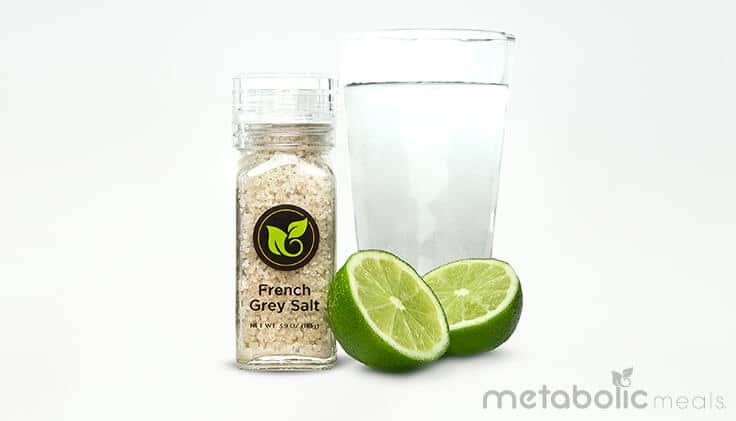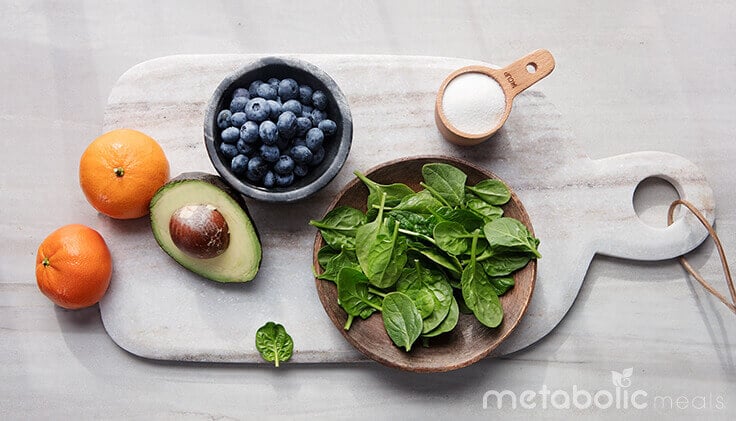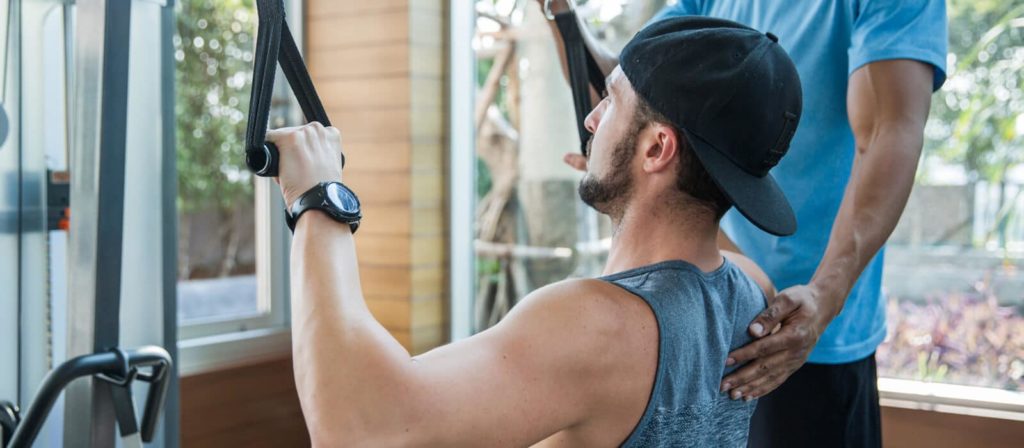As the director of sports performance for men’s basketball at the University of Houston, I know nutrition plays a key role in the development of my student athletes. When I first started here, in May 2017, it was clear that our guys had been training hard prior to my arrival but that nutrition wasn’t getting the attention necessary to optimize performance.
Fortunately, I was able to lay out a plan to our staff, strip everything down to the bedrock, and build up a nutritional philosophy that I felt would best enhance our athletic development and complement the training we were doing in the weight room.
Before we dive into the process, I want to point out a big-picture item to keep in the back of your mind. There are two types of genetics: weight room and bedroom. The majority of elite-level athletes are made in the bedroom, not in the weight room. No matter how many sets and reps Danny DeVito does in the weight room, he will never reach the kind of athleticism that LeBron James was born with. Truly world-class athleticism has less to do with training and more to do with picking your parents the right way. No number of squats will take you from 5 feet 6 inches to 6 feet 6 inches. No amount of bench press will take you from a 6-foot wingspan to a 7-foot wingspan. And no number of power cleans will take you from a 20-inch vertical to a 40-inch vertical.
But no matter an athlete’s ability, they can take whatever athletic gifts they have and maximize them to their genetic potential. That is where nutrition comes in.
Nutritional Philosophy and Principles
My nutrition philosophy is simple: The purpose of food is to fuel specific goals and serve as a signal that dictates hormonal response and neurotransmitter production.
Everything an athlete eats should reflect this philosophy, and there are a number of simple principles to help guide the way. While there are more than these 10, this group of guidelines is extremely important for sport performance.
- Drink more water.
- Eat more vegetables.
- Know where your next meal is coming from.
- Eat 40 grams of protein and dietary fiber at every meal and snack.
- Dietary fats are critical.
- Carbohydrate quality is more important than carbohydrate quantity.
- Carbohydrate quantity is dictated by body composition goals.
- Micros drive the bus; macros are along for the ride.
- Fat front-load; carb back-load.
- Sleep — you can’t out-eat sleep deprivation.
Getting Started
My first day on the job, with this philosophy guiding my vision, I walked around our facility trying to get a feel for where we were and how we could improve.
Immediately, I felt there were three underutilized areas that would be absolutely critical to the success of our team:
- Training table: a dining hall with specially prepared meals to enhance training
- Fueling station: easy access in the locker room to nutritious snack options for athletes
- Post-training nutrition: recovery options available to athletes immediately after a workout
Training Table
The most important aspect of an athlete’s nutrition is not specialty supplements or magic powders; it is the whole foods they consume daily. Whole foods provide the caloric fuel necessary to excel in competition as well as the micronutrients essential for optimizing tissue quality, the hormonal profile, nervous system regulation, and cognitive function. Because I have the luxury of feeding my athletes only one of their meals per day, it is critical for me to make sure it is the best meal possible.
Where most athletes miss the boat is by focusing too heavily on macronutrient intake and disregarding micronutrient makeup and food quality. We are not enhancing performance by pushing a narrative that breakfast cereals, bagels, baked chips and crackers, processed breads and pastas, and food dye-loaded sugar bomb beverages will enhance athletic performance. This is an unfortunate reality of many athletic departments: There is such a fear of being “underfed” and “glycogen depleted” that instead of pushing nutrient-dense options, we settle on calorically dense empty calories.
The reality of life is that 99 percent of athletes are not macronutrient deficient. I work in Houston, Texas. We are the least macronutrient deficient city in America. But we know from endless stacks of research that a minimum of 80 percent of our athletes will be micronutrient deficient. Magnesium deficiency, vitamin D deficiency, zinc deficiency, omega-3 fatty acid deficiency (an imbalance of omega-6 to omega-3), etc., not only hinders health, but also destroys performance.
With all this information in mind, I scheduled a meeting with our on-campus caterers and gave them a few simple guidelines for every training table meal we would eat.
- Every athlete will get a minimum of 40 grams of protein per meal.
- This protein minimum per feeding ensures adequate protein synthesis.
- We will have vegetable, including green vegetable, options at every meal.
- Green vegetables in particular are extremely micronutrient-dense and lessen damage to mitochondria by decreasing the body’s free radicals.
- Additionally, green vegetables such as cabbage, broccoli, Brussels sprouts, kale, and bok choy are rich in fiber as well as the phytonutrient diindolylmethane (DIM), both critical for proper estrogen metabolism.
- We will have unprocessed carbohydrate options at every meal.
- Unprocessed carbohydrates are not only more nutrient-dense and less chronically damaging to the body’s insulin response, but they also lack the sodium-rich properties of many processed foods that upset the body’s electrolyte balance.
- Natural, whole-food carbohydrate options are a much healthier and less inflammatory option for replenishing muscle glycogen than sugar-bomb beverages.
- We will have water at every meal.
- Water is king of hydration because it doesn’t come with the unnecessarily high sugar content of other options.
These four training table guidelines have been the foundations of our sports performance nutrition protocols. With these in place, we’ve had a successful and healthy year.
Fueling Station
The second aspect of our nutrition model that has played a key role in the development of our basketball student-athletes has been our fueling station. While meals are the foundation of our nutritional needs, a fueling station ensures that:
- There is always access to healthful food options.
- Athletes know where their next meal is coming from.
- We keep cortisol levels in check by eliminating the stress response to hunger.
One of the biggest problems in college athletics is that we try to spend all of our time “educating” our kids on the right way to eat, but we don’t spend any time actually helping them change their eating habits. The truth is, education is important, but it is not enough to motivate people to eat healthfully. People know junk food and fast food are unhealthy, but they eat it anyway. People know they should be eating vegetables, but they don’t. Knowing is not enough. We need to create lasting impact by changing habits.
Our fueling station is available to our student-athletes 24 hours a day. While the products rotate, the bulk of our options include nuts, berries, low-glycemic-index protein bars, fruits, vegetable cups, Greek yogurt, non-GMO organic sprouted-grain breads, and water bottles.
Having these options available ensures that our athletes always know where they can find a healthful snack. By creating a habit of reaching for carrots instead of potato chips and eating small meals throughout the day instead of trying to figure out dinner at 7 p.m. and inevitably hitting up a drive-thru, we are creating actionable habits that produce real results. This is critical because the No. 1 way to fall off the wagon is to not know where your next meal is coming from.
When meals aren’t planned in advance and you start getting hungry, the body’s response is an increase in stress hormones, which affect the way the body processes insulin. When stress hormone levels elevate, the body craves sugar to elicit a glucose and insulin response. That’s why at the end of a long and stressful day, the body craves ice cream and not broccoli. Chronically elevated stress hormone and blood glucose levels wreak havoc on insulin sensitivity and body composition. If we want players to be lean, strong, and high-performing, we need to eliminate the constant roller coaster of stress hormones and insulin spikes.
While it may seem like a small factor, having constant access to healthful snack options helped us finish the season healthy, perform at a high level, and maintain body weight and composition goals necessary to compete in the league.
Post-Training Nutrition
When it comes to training, the one hour in the weight room is absolutely essential, but the other 23 hours are critical to success. Once that training session has ended, the way to elicit the best response is to start the recovery process immediately.
One of the biggest mistakes in post-training nutrition is handing out products because of their carbs-to-protein ratios but not taking into account the way the body responds to them. For example, while chocolate milk may have ideal macronutrients, at a 3-to-1 ratio of carbohydrates to protein, it is not a good option for a person who is lactose intolerant. Additionally, products that get their carbohydrates from high-fructose corn syrup may not be ideal for someone who is overweight and already insulin-resistant. Further, somebody who has an inflammatory response to artificial sweeteners should avoid them entirely, but especially in their post-training nutrition.
Our post-training nutrition at the University of Houston starts out with 40 grams of grass-fed whey protein. Whey protein is packed with branched-chain amino acids, which are necessary for muscle growth and essential in post-training nutrition. But serving whey protein isn’t enough; it is important to remember that how an animal eats affects the quality of its meat and milk. Whey from grass-fed cows contains more omega-3 and conjugated linoleic acid, which helps reduce inflammation and body fat.
Chelated minerals also play an important part in post-training recovery. Minerals such as magnesium and zinc have been shown to improve strength and muscle mass, and they are essential for ensuring proper nervous system function and muscle health as well as a healthy hormonal profile. While minerals can be obtained through the diet, research supports using supplementation to optimize performance.
Adding in the right protein and carbohydrate sources as well as vitamins and minerals to our post-training nutrition ensured that benefits like sleep quality and muscle endurance were maintained throughout the grind of a long season.
The Reward: Winning Results
In my first season at the University of Houston, we saw the results of our nutrition program on the court. We finished with a perfect 15-0 home record and a 27-8 overall record. We tied for second place in our conference, finished the year ranked in the top 25 in both the AP and USA Today polls, and we made our first trip to the NCAA tournament since 2010 and won the program’s first NCAA tournament game since 1984.
Every collegiate basketball team works hard, both on the court and in the weight room. But I am a firm believer that nutrition is the X-factor and that what we did off the court played a huge role in our success.
Implementing a sports performance nutrition model is not difficult, but it often goes overlooked. If I could sum up ours, I would say that we didn’t do what was easiest; we did what was best for our student athletes.
Year one is in the books, and I look forward to many successful years to come.
Alan Bishop is the Director of Sports Performance for Men’s Basketball at the University of Houston. Alan has a master’s degree in Sports Conditioning and Performance and holds certifications through the NSCA, CSCCA, and USAW.











